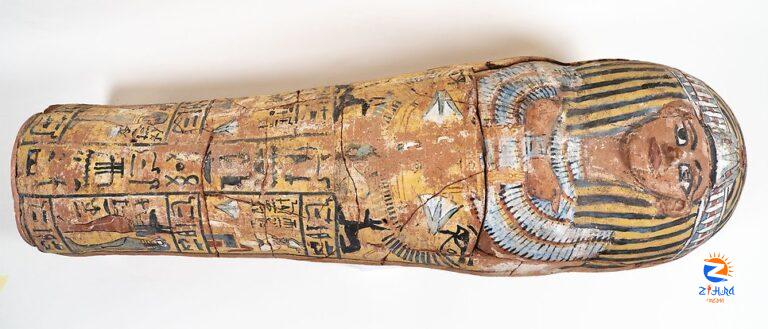
[ad_1]
The Museum of Fine Arts (MFA) in Boston has returned a small decorated clay sarcophagus belonging to an Egyptian child who died over 3,000 years ago to Sweden’s Gustavianum, Uppsala University Museum after discovering that the artifact had been stolen.
The museum’s research revealed that the documents it was provided when it acquired the piece in 1985, including papers mentioning that it had been excavated by the Swedish artist Eric Ståhl (1918-99) in 1937, were found to be inauthentic.
According to the Art Newspaper, the sarcophagus had first been excavated by the British School of Archaeology in Egypt from a site in Gurob in 1920 and two years later was sent to the Gustavianum, then known as Victoria Museum of Egyptian Antiquities.
It vanished from the museum at some point prior to 1970.
When staff at the MFA noticed a discrepancy between their documentation and a 2008 book that included a photograph of the coffin’s excavation noting that it was sent to the Gustavianum, they reached out to the Swedish museum.
The MFA Boston’s senior curator of provenance, Victoria Reed, said: “In this case, we were fortunate to have an excavation photograph showing where and when the coffin was found, so that we could begin to correct the record,”
“Anytime we deaccession and restitute a work of art from the museum, it serves as a good reminder that we need to exercise as much diligence as possible as we build the collection,” she added in a statement.
The sarcophagus has been returned to the Gustavianum, but will need to undergo further restoration work before it can be displayed.
“The child’s sarcophagus is an important item in our collections and it means a lot to the museum and the university that it has now been returned to us,” the Gustavianum’s director, Mikael Ahlund, said in a statement.
“The sarcophagus is an excellent complement to our Egyptian collections and will now be available for research,” Ahlund added.
The coffin dates back to the Nineteenth Dynasty of Egypt (1295-1186 BC), and is richly decorated. It was made for a boy named Paneferneb, and is about 43 inches (110 cm) tall.
The circumstances surrounding the artifact’s theft and smuggling to the US museum remain unknown.
[ad_2]